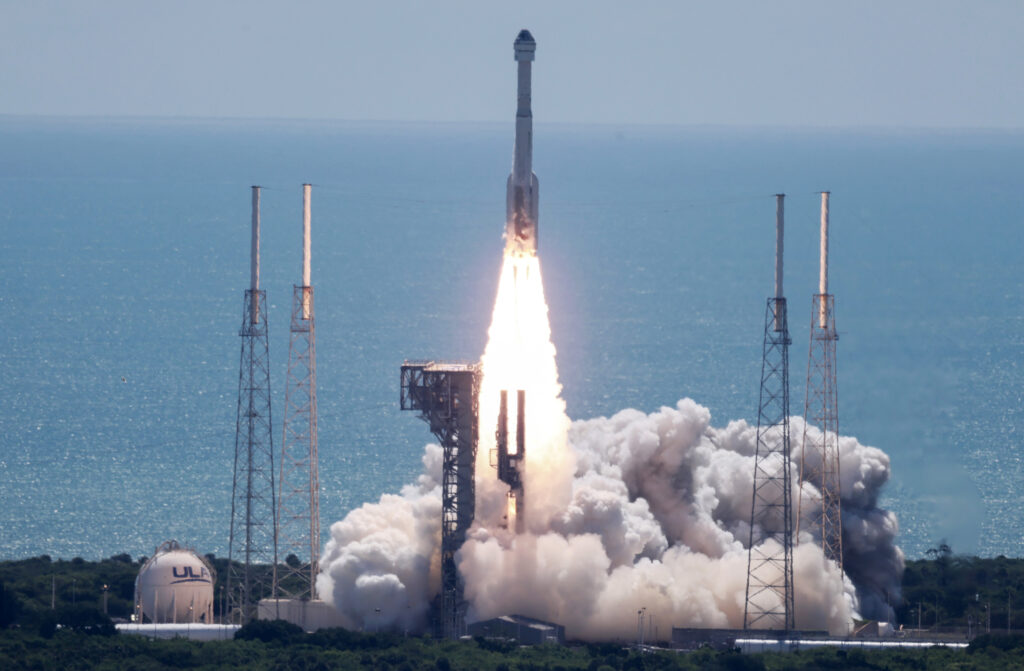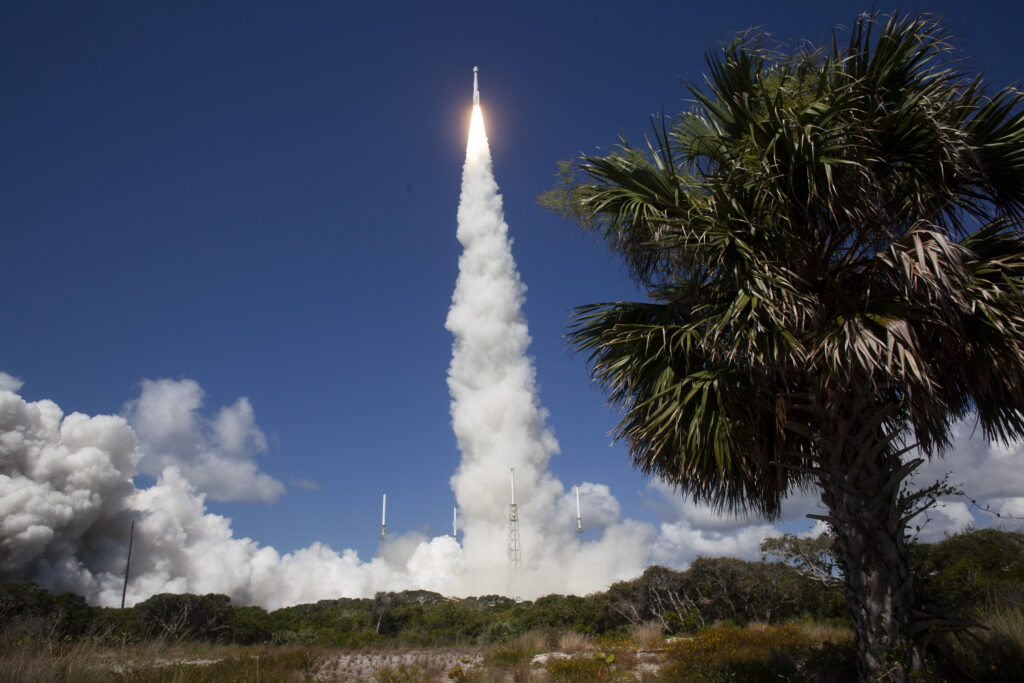Boeing Starliner Ends American Dependence on Russia in Space, Hints at Preparation for Space Wars
‘It’s not a permanent lead,’ an aerospace security analyst tells the Sun. ‘It’s our race to lose.’

Boeing’s manned Starliner trip to the International Space Station suggests that America is preparing for its geopolitical contest with Russia and Communist China to extend to space. The success of the Starliner, which launched June 5 and docked at the space station the following day, ends thirteen years of American dependence on Russia to reach the ISS following NASA’s retirement of its space shuttle in 2011.
Although SpaceX has helped send astronauts to the ISS since 2020, NASA was still reliant on Russian delivery systems until the Starliner trip.
The breakthrough indicates that America can no longer assume amicable cooperation with Russia on space travel; rather, the Americans need to prepare for war to extend into the domain up above.
“The future of war in space is about unmanned systems,” the director of the quantum alliance initiative at the Hudson Institute, Arthur Herman, tells the Sun. Boeing’s Starliner “could carry unmanned assets into space.”
The key to success, if and when war arrives, lies in the ability “to move in space, move out of orbit,” says Mr. Herman. Starliner could allow for the development of maneuvering operations.

The success of the Boeing Starliner is “good news” for American national security, and “good for getting people in space that might support lunar missions,” the director of the center for defense concepts and technology at the Hudson Institute, Bryan Clark, tells the Sun.
While the docking of Boeing’s Starliner at the ISS shows promise, the advancement of space capabilities by American adversaries presents cause for concern.
The Chang’e 6 probe which Communist China launched last month is now on its way back to Earth with lunar rocks, the first ever collected from the far side of the moon. A space plane operated by Beijing released an unknown object earlier this week that could be a subsatellite deployment.
Communist China “is moving at a breathtaking speed,” says the commander of the United State Space Command, General Stephen Whiting. “They’ve more than tripled their on-orbit intelligence, surveillance, and reconnaissance satellites” since 2018, he says, creating a “kill web” to target American military capabilities.

Russia, too, recently launched a satellite into space which can be used to spy on American government satellites and may be weaponized. Russia has said that civilian satellites too “may become a legitimate target for retaliation.”
Russia’s space capabilities are on the decline, “but they may not have as much to lose,” the deputy director of the aerospace security project at the Center for Strategic and International Studies, Clayton Swope, tells the Sun. This raises the likelihood of a Russian attack on American assets.
The use of nuclear weapons in space is not a primary concern, “but I wouldn’t rule it out,” says Mr. Swope. “We should be working to stop Russia from having such a capability” by working “with partners like India who can apply pressure.”
The Islamic Republic of Iran has also been developing its space-based technology. In January, Tehran successfully launched three satellites that can be used to improve its ballistic missile program. A month later, an Iranian satellite made it into orbit with the help of a Russian rocket.

America should be worried about certain types of space warfare such as an “electromagnetic pulse,” says Mr. Clark. American satellites are “vulnerable to being jammed” or “electromagnetic warfare,” he adds.
Starliner’s success, though, creates an opportunity for the Space Force “to expand mechanisms for delivering what is on orbit,” says Mr. Clark. In 2019, America created a sixth branch of the Armed Forces — the Space Force — to deal with threats to American and international security in space.
The Space Force should improve “space-based communications” and “space situational awareness, especially for geosynchronous satellites,” says Mr. Clark. This can happen with the help of “commercial providers,” he adds.
The Space Force “needs to step up” and “come up with a distinctive, standalone strategy,” says Mr. Herman. It is a “force that needs to be supported, not there to support.”
“It can draw upon commercial resources,” Mr. Herman adds, but must be able to take on threats in space. The Space Force’s own budget plan for fiscal year 2025 dropped by two percent compared to this year. Its success, moreover, may depend more on commercial successes, like Starliner’s, in the heavens next year.
“One thing the U.S. will bring to the table that China can’t is our ability to innovate,” says Mr. Swope.
“It’s not a permanent lead,” though, says Mr. Swope. “It’s our race to lose.”
___________
This article was updated to note that while SpaceX has helped send astronauts to the ISS since 2020, NASA was still depending on Russian delivery systems until the Starliner trip.

